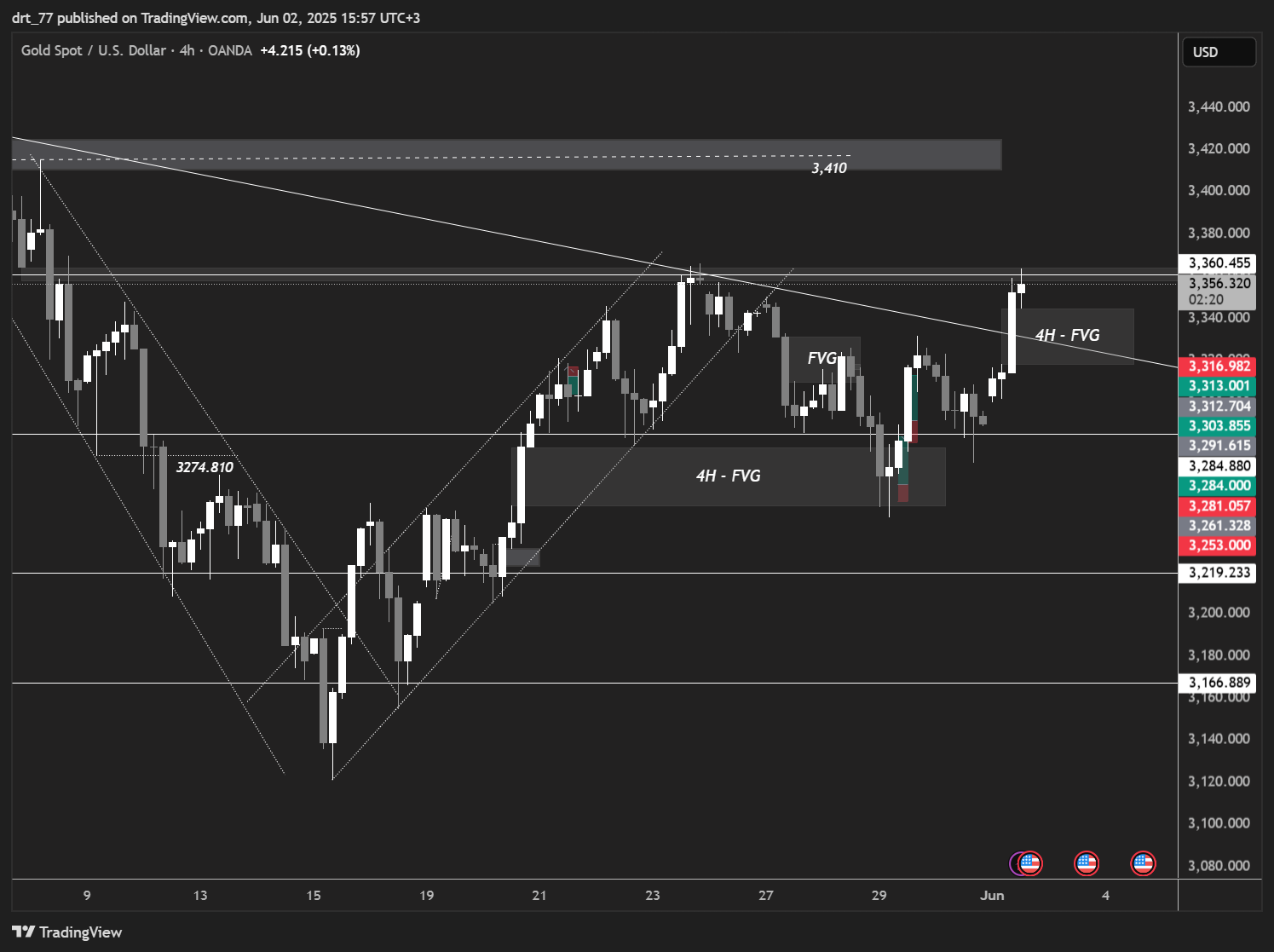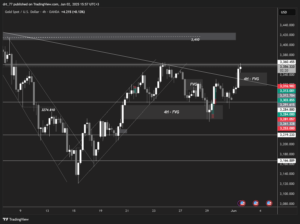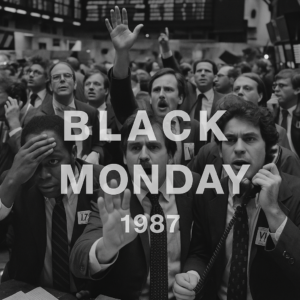Gold prices rose in Asian trading on Tuesday, recovering some losses incurred overnight as traders awaited signals on easing from Federal Reserve Chairman Jerome Powell’s anticipated testimony. The yellow metal had declined on Monday but still held onto gains from the previous week, fueled by weak labor market readings that increased expectations of a September interest rate cut. Weakness in the dollar also supported gold’s rise.
Spot gold rose 0.1% to $2,361.97 per ounce, while August gold futures jumped 0.22% to $2,328.40 per ounce as of 11:20 AM Riyadh time. Gold rises on expectations of Powell providing more signals on interest rates Gold benefited from increased speculation of a rate cut in September, especially with the dollar weakening. Weak readings on the labor market led traders to bet that Powell would strike a dovish tone during his two-day congressional testimony, which begins later on Tuesday. While Powell recently hinted at progress towards inflation reduction, he also stated that the Federal Reserve still needs more confidence to begin cutting interest rates.
In addition to Powell, more Federal Reserve officials are scheduled to speak this week. Key inflation data, represented by the Consumer Price Index, is also set to be released and likely to influence Federal Reserve expectations regarding interest rates. Low interest rates bode well for gold and other precious metals as they reduce the attractiveness of the dollar and bonds, which typically shine in a high-interest-rate environment. Other precious metals also rose on Tuesday. Platinum futures rose 0.7% to $1,022.05 per ounce, while silver futures increased by 1% to $31.218 per ounce. Silver has also outperformed gold significantly in recent months.
Copper prices rose, awaiting more signals from China Among industrial metals, copper prices rose further on Tuesday as they recovered from sharp losses suffered in June. London Metal Exchange (LME) copper futures rose 0.2% to $9,933.50 per ton, while one-month copper futures increased by 0.4% to $4.6245 per pound. Copper traders are closely watching for more economic signals from China, the largest importer of copper, with trade and inflation figures expected later this week.
However, China has been a sore spot for copper, as waning optimism about the country led to sharp declines in the red metal in June. Concerns about a trade war with the West also kept copper prices relatively low. China halts gold purchases for second month after year-and-a-half buying spree Global gold prices dropped significantly during today’s trading session following the largest weekly gain in three months, as the People’s Bank of China ceased boosting its reserves of the yellow metal for the second consecutive month. Alloys are now trading near $2,374 per ounce after rising approximately 3% last week. The People’s Bank of China did not add gold to its reserves for the second consecutive month in June, but a report from India suggested that the country’s central bank may have increased its alloy reserves by the largest amount in nearly two years.
Currently, a “slight retreat in gold prices” should not be ruled out following the release of the People’s Bank of China statement. “However, it is natural for China to temporarily halt its purchases, given the sharp rise in gold prices.” Gold has risen this year – hitting a record high in May – as central bank purchases have boosted prices, with policymakers in countries like India, China, and Singapore diversifying reserves. The precious metal has also been supported by bets that the US Federal Reserve will begin cutting interest rates amid declining inflation and geopolitical tensions.
The alloys held by the People’s Bank of China remained unchanged at 72.8 million ounces at the end of last month, according to figures released on Sunday. The central bank chose not to add reserves in May, ending an 18-month buying spree.
Negative signals cannot be ignored by the Fed, Interest rate cuts are not a luxury
The Federal Reserve “can no longer ignore the labor market,” according to a report from PCIA Research released on Friday. With unemployment rates now exceeding 4%, the Federal Reserve is expected to increasingly consider labor market conditions in its short-term policy decisions.
The report stated: “The three key labor market indicators (job vacancy rate, unemployment claims, and nonfarm payrolls) have significantly declined, but have not yet signaled an imminent recession.” Despite the lack of such a signal, PCIA highlighted that the Federal Reserve “no longer has the luxury of focusing solely on inflation.”
Although the job vacancy rate increased slightly in May, it significantly decreased from its peak and is close to PCIA’s 4.5% target.”At present, this downward trend seems sound,” said PCIA, noting that job vacancy data “flashes yellow, no longer green but not yet red.”
In addition, initial and continuing unemployment claims provide conflicting signals.The report stated: “Continuing claims are somewhat higher compared to historical lows while initial claims remain consistent with our benchmark.” PCIA also pointed to nonfarm payrolls, which showed a significant decline in momentum. The economy added 206,000 jobs in June, but with significant downward revisions for the previous two months.
The research firm said that assuming this morning’s number was adjusted downward by 27,000 jobs, the economy added only 168,000 jobs on average per month over the past three months, slightly lower than the Bank of Canada’s research estimates.”The high unemployment rate is a result of both increased labor supply and significant hiring slowdown. While layoffs continue to decline, it has become increasingly difficult for the unemployed to find new jobs.”
Given these conditions, PCIA expected the Federal Reserve to likely signal a rate cut in September at its later this month meeting, particularly if the upcoming Consumer Price Index report is weak.
Disclaimer: This article is not investment advice or an investment recommendation and should not be considered as such. The information above is not an invitation to trade and it does not guarantee or predict future performance. The investor is solely responsible for the risk of their decisions. The analysis and commentary presented do not include any consideration of your personal investment objectives, financial circumstances, or needs.





